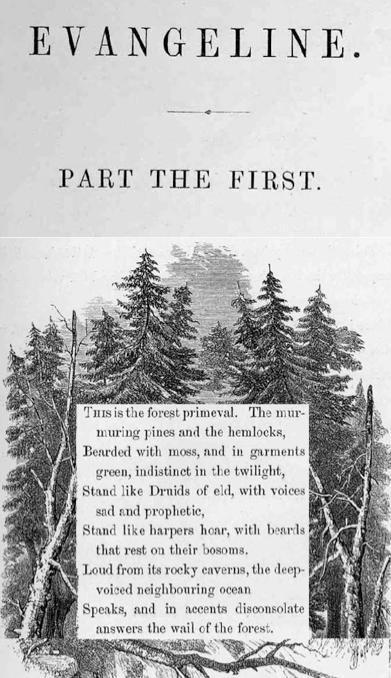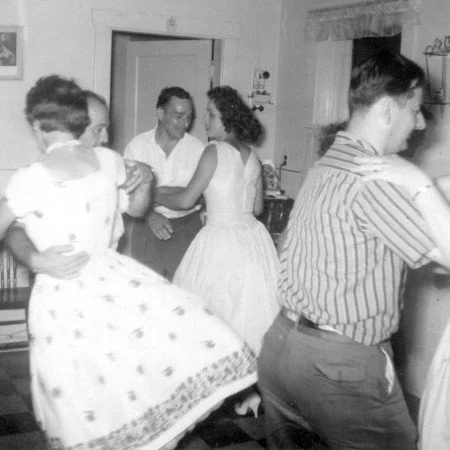Programs
Le chansonnier d’Evangéline
Following the traces of the viol from Acadia to New Orleans
A dozen viols were discovered in the walls of the Ursuline convent in Quebec City in the mid-19th century, likely concealed there during the 1759 Battle of Quebec. These instruments, three of which are now housed in New York’s Metropolitan Museum, represent what was once a vibrant but little-known tradition of viol playing– not only in the Ursuline House, but across colonial North America. The Ursuline convent of New Orleans, despite its many musical similarities with its Northern cousin, has no known surviving instruments and only one remaining musical manuscript. Le Chansonnier d’Evangéline imagines the journey of one of these mysterious viols in the context of Henry Wadsworth Longfellow’s epic poem Evangeline, published just before the instruments were discovered in Quebec. The poem follows Evangeline Bellefontaine, a young Acadian woman in the search for her love, Gabriel, during the British expulsion of the Acadians (1755–1764) from what are now the Maritime provinces of Canada, the Gaspé Peninsula and Maine. Her search spans North America, from Canada to Louisiana, and encounters the many diverse musical traditions therein.
The Fine Hand explores this rich musical moment in North American history through a soundscape centered around the probable (and possible) uses of the viol. We have curiously approached Longfellow's fictionalization of encyclopedic history, and drawn our own imaginary map of Evangeline's path through various musical styles: the fiddle and flute reels of Grand Pré, the liturgical music of André Campra in Quebec City and Port Royal, the Biloxi Créole music of Louisiana, the Ursulines’ contrafacta in New Orleans, and the stark four- and five-part hymns of William Billings. We have embedded these musical elements into a second-hand mythology, inspired by their history, but not restricted to their original function or context. Such mythology opens pathways towards understanding the more cryptic parts of the human experience, and in a broader sense, points of tension or mystery in contemporary culture. We have travelled along with Evangeline in an effort to illuminate our own grief and confusion over the many kinds of loss we are experiencing today, and to explore vital connections between seemingly far-away lands and traditions, through the romanticized cipher of the Acadian expulsion from Nouvelle France.
ABOUT
La belle delaissée (Traditional Acadian)
Valse a Pop (Balfa Brothers/Traditional Cajun)
send it by the water
The Myth of the Ballad
The singing of ballads is an essential aspect of American music history, transmitted by oral tradition and single-sheet broadsides from the British Isles, France, Germany, Scandinavia, and elsewhere; experiencing many “revivals'' in popularity: as memories of a recently departed homeland in harsh Colonial America, as resistance songs in the voices of enslaved people, as religious and moral affirmation in the Great Awakening, on the front porches of poor, mostly forgotten populations in rural Appalachia, and into the 20th century, where the tradition thrived in the folk music movements of the 1960s. From the beginning of its history, the ballad was always a subject of fascination, and lifted up with a grand sense of folklore and legend, with its early collectors like Bishop Thomas Percy (1729-1811) and the later Frances James Child (1925-1896) often hailing the ballad as one of the most ancient examples of aural transmission, with its performance practice dating back to the Middle Ages. In reality, this is probably not the case, but there is something about the myth of the Ballad that found a unique space in the American imagination.
An initial listen to ballad performances from the British Isles and North America recorded by preservationists in the mid-20th century reveals astonishing similarities between the aesthetic choices of traditional singers with accompanying instruments practiced in a variety of musical cultures, and the cultivated modern, "historically-informed" performance styles of monophonic Medieval European songs. There is a formula between the voices and instruments in both genres: a simple yet magnetic approach to supporting the texts and modal melodies. Tactics used effectively in each of these sound worlds have included the use of drones, text-based rhythmic structures or free-rhythms, monophonic modal improvisation, and idiosyncratic instrumental ornamentation, for example. Much of the traditional instrumental music which made its way to North America during the colonial era can also be structurally compared to surviving forms of early European instrumental music such as the estampie or ductia. Therefore, it would seem that our current musical imagining of Medieval European song performance has, justifiably, absorbed some amount of influence from the equally inventive aesthetic developments that occurred within the many converging cultures of ballad singing and traditional instrumental performance in the 19th and 20th centuries, on both sides of the Atlantic ocean.
People born on the North American continent sometimes long for the feeling of historic continuity, of a profound link to something that came before. We are often obsessed by our lineage; testing our DNA to trace our origins, aligning ourselves with our ancestors, expressing a form of proud heritage. Sometimes we trace our origins out of more than casual curiosity, for a past that was erased, having been unwillingly transported and enslaved. Sometimes it is the search for a past that is under our own feet, on land stolen from us. America is a land of displaced peoples: an amalgam of memories, traditions, feelings, languages, lands. The singing of ballads and stories links each one of us to our imagined homelands and to a feeling of continuous layered histories.
ABOUT
O, Death (Roud 4933)
Exit 181 ‘Death Like An Overflowing Stream’ (Sacred Harp)
Bonnie Annie (Child 24/Roud 172)






